Do You Have To Use Exact Keyword Prhase In Blog Title
Article stats
-
Monthly traffic 2,960
-
Linking websites 521
-
Tweets 151
Data from Content Explorer
Shows how many different websites are linking to this piece of content. As a general rule, the more websites link to you, the higher you rank in Google.
Shows estimated monthly search traffic to this article according to Ahrefs data. The actual search traffic (as reported in Google Analytics) is usually 3-5 times bigger.
The number of times this article was shared on Twitter.
Most people think title tags are pretty straightforward. There's no way you can mess them up, right? Or is there? The truth is, title tags have more potential (and SEO value) than most people realize. For example, take a look at these two title tags: Here's what happened to our organic traffic when we changed our Rank Tracker title tag from the former to the latter: That's an increase of ~37%! Sidenote. We realize there are many variables at play here. We can't definitively say that the change in title tag contributed entirely to this increase. But we think it's clear that it had a positive effect, at least. In this article, I'll cover everything you need to know about SEO Title tags. I'll also run you through a 4‑step process for creating title tags that work every time. https://www.youtube.com/watch?v=jqEoZsIOrYw Let's get started. New to on-page SEO? Check out our A title tag is the HTML element used to specify the title of a webpage. Here's how it looks in its raw form: Its primary job is to tell visitors and search engines what they can expect from the web page (in the shortest and most concise way possible). But because title tags typically show up in the SERPs… And when a page/post is shared on social media… It's essential that a title tag entices the user to click-through to your post from the SERPs (or wherever they are). Here are a couple more reasons why title tags are important: And don't forget that Google (and other search engines) look at your title tag, amongst other things, to help make sense of your page. That's likely why there's a slight correlation between the usage of keywords in the title tag and rankings. Sidenote. As correlation != causation, you should take this graph with a pinch of salt—after all, 0,0496 is a very weak correlation. Either way, this isn't to say that you need an exact-match keyword in your title tag. You don't. Ever since the introduction of Hummingbird, Google is smart enough to understand synonyms and "conversational search." In short, everything—they're entirely different HTML-tags. The confusion arises because title and H1-tag copy is often the same. For example, here's the H1-tag from our list of 75 SEO tips. From a copy standpoint, it's the same as the title tag. This way of doing things is standard practice for most websites as it helps with clarity and consistency. If users click through from the SERPs because of a particular title, chances are they're expecting the same (or at least a similar) title on the page. So how do you know the difference? In short, it's your title tag that's visible in the SERPs and when your content is shared on any other platform. On the other hand, the H1-tag is the displayed "title" on the actual page. Don't confuse this with the title that's visible in the tab of your browser—this is the title tag. So, now you understand what a title tag is and how it's important, let's talk about how you can craft a good one. But first, let's go over a few basics… Have you ever seen a result in the SERPs that looks like this? This is known as title tag truncation. Google starts cutting off title tags in the SERPs after around 50–60 characters. (Well, it's actually based on pixels, but 50–60 characters is a good rule of thumb.) So keep your title tags around this length. You can test your title tag with one of these pixel width checking tools: How about this? Probably not. All-caps is poor etiquette when it comes to title tags. And honestly, I've never seen an all-caps title tag ranked on the first page (or anywhere, for that matter). Here are the two options we recommend for title tag formatting: And yes, the odd all-caps word (for emphasis) is fine. Just don't go for all-caps. It will attract attention. And not for the right reasons. Here are a few other things to keep in mind when crafting title tags: Got it? Good. Let's get crafting! Here at Ahrefs, we generally advocate targeting topics over keywords. This is because most pages don't just rank for their "head" keyword, they also rank for lots of other related terms and variations (i.e., long-tail keywords). In fact, we found that the average #1 ranking page will also rank well for about 1,000 other relevant keywords. Example: The keyword "best whey protein powder for women" has a search volume of 400/month. Yet each of the top-10 ranking pages receives thousands of organic visits per month. This is because each of these pages ranks for hundreds of other long-tail keywords. Here are some of the 700+ keywords the current top-ranking page also ranks for: Pretty cool, right? Still, when it comes to title tags, we recommend that you primarily optimize for one main "head" keyword. (And maybe one-or-two long-tail keywords. More on that in step #2.) Already got a keyword in mind? Great. Otherwise, do this: Go to Keywords Explorer. Enter a short description of your page/post. Example: If we were doing this for our list of 75 SEO tips, we'd enter something like this: Sidenote. Forget "keywords" and "SEO" for this. Just enter a rough description of your page. You'll likely notice that there is little/no search volume for whatever you entered. This isn't a problem. Scroll down to the SERP Overview. This tells you the Top Keyword (i.e., which keyword sends the most organic traffic) for each of the top-10 ranking pages. Nine times out of ten, this will unveil the most appropriate primary keyword for your page. In this instance, it's clearly "SEO tips." None of these Top Keywords seem like a good fit? Try this… Hit "Keywords ideas" > "Also rank for" (on the left-hand menu). This will reveal a ton of other keywords that the top-10 ranking pages also rank for. They're sorted by search volume, so work your way down the list until you find a keyword that fits your content. In this instance, "SEO tips" and "SEO techniques" are a good fit. But as "SEO tips" has a higher search volume, we'll stick with that. 🙂 You should always be targeting ONE primary keyword. But it also usually makes sense to target one or two long-tail keywords. Why? Because it can take a long time to rank for your main keyword. But you can start getting traffic from long-tail variations quite quickly. And these long-tail variations can often be incorporated into your title tag without unnatural shoehorning. But what are long-tail keywords? I'll let David McSweeney explain: Long tail keywords are the search queries with very low individual search volume, but an enormous total search demand as a group. The name comes from the "long tail" of the so-called "search demand curve" — a graph, that plots all keywords by their search volumes. Here's the graph he is referring to: As David also states, these keywords tend to be longer and more specific than commonly searched-for keywords. (Not always, though.) Example: You get the idea. But how do you find long-tail keywords? Go to Keywords Explorer and enter your primary keyword (e.g. "SEO Tips"). Then hit "Phrase match" on the left-hand sidebar. This will show you other keywords that contain your primary keyword. Sidenote. You can also use the "Having same terms" report to discover long-tail keywords. As the name suggests, this shows other similar keywords that contain the same terms as our primary keyword, but not necessarily in the same order. E.g., "SEO copywriting tips" or "SEO content writing tips." Not all of these will be relevant. For example, "youtube SEO tips" and "local SEO tips" aren't relevant to our list of SEO tips. But "SEO tips 2017" is. (Well, 2018 now). So we'll note that down alongside our primary keyword. Your next step is to draft a basic title tag. Here are the rules: OK; let's draft a title tag for our list of 75 SEO tips. Something as simple as this would work: This incorporates both our primary keyword ("SEO tips") and our long-tail keyword ("SEO tips 2018"). Sidenote. It's true that this doesn't include our long-tail keyword as an exact phrase (i.e. "SEO tips 2018"). But this doesn't matter. Google is smart enough to understand that the inclusion of "2018" must mean that these tips are fresh and relevant for 2018. Shoehorning the exact phrase of "SEO tips 2018" in there wouldn't make sense as it doesn't read particularly well. Sure, it's quite basic. But basic is good—just make sure it's descriptive. Let's try another one; this time it's for our multilingual SEO guide: Pretty basic stuff, right? But what about a product page? Here's are a couple of drafts for a hypothetical printing company selling business cards: Sidenote. Don't be afraid to come up with a couple of drafts title tags. You can take them both through this process and decide which one is better at the end. It's as simple as that. Remember, your main focus is descriptiveness. You're not trying to shoehorn a ton of keywords in there. Just describe your page accurately and concisely. And include your primary and long-tail keywords in there. Don't be afraid to mix things up… It's also totally fine to mix things up a little, or even negate some words. For example, let's assume your keyword was "best protein powder." This would work: And it's fine to use synonyms, too. Google does a great job at inferring searcher intent from natural language. So they will understand what you're talking about. Everyone that performs a Google search is looking for something. But that something isn't always the same. People tend to look for certain "qualities" in the search results—exactly what these are will depend on the nature of the query. However, if you've created your page/post around a specific query/topic, it's likely that there's already overlap between the "qualities" your content embodies and the qualities people want to see. You just need to make these clear to potential visitors in your title tag. Here are five "qualities" people tend to value (and how to make them clear in your title tag): Sidenote. For e‑commerce sites, "price" can also be seen as a valued quality. So, if you're competing on price, don't be afraid to let people know by stating this in your title tag. Here are a few words/phrases to use: "cheap," "low cost," "bargain," "…from $XXX," etc. But what should you do if your page taps into multiple "qualities"? Well, first things first, you shouldn't overwhelm searchers by shoehorning too many selling points into your title tag. Always keep it natural. Then, look at what's ranking already in the SERPs. This will give you a deeper insight into searcher intent. It will also tell you what "qualities" people value in the results. For example, Google "best restaurants in New York" and you'll see a lot of results like this: In fact, all of the top 10 results are "listicles." People who are searching for this query clearly value "quantity" above all else. But if you Google "cheap holidays," you'll see that people value price above all else. Let's incorporate this into our SEO tips title tag. Adding the phrase "That Work in 2018" to our title tag shows that this is a fresh, up-to-date post. We're telling people that these tips work right now. But this title tag also incorporates a couple of other "qualities, too: Bottomline: always align your title tag with searcher intent. And we're done…at least until you start ranking! But what then? I know what you're thinking… "Why haven't we talked about CTR? That's a ranking factor these days, right?" Yes, it almost certainly is. But here's the thing: there's no point spending time and effort optimizing for CTR until you reach the top 10. Why? Because most people don't go beyond the first page of results. This means that impressions on your result in the SERPs will be low—just check Search Console. However, once you start ranking in the top 10 for any worthwhile keywords (i.e., those with actual search volume), this should be more of a focus. Here are a few ways to increase CTR with your title tag: Amazing. Remarkable. Magic. Extraordinary. Etc. These are all power words that tap into people's emotions. Incorporating these into title tags can do wonders for CTR. But contrary to popular advice, you shouldn't pick these randomly. First, you should answer the following questions: For example, let's take the term "SEO tips". (again) We already know that anyone searching for this term wants to see a list of SEO tips; you can tell because it's a plural term (i.e., "SEO tips," not "SEO tip"). The fact that most of the top 10 search results are list-style posts also confirms this. But what about the specifics? Let's answer the questions above and try to figure this out. It looks like actionability is our unique value-offering here. Let's update our title tag: Brackets/parentheses can help break up your title tag and improve readability. For example, let's add parentheses to our SEO tips tag: Looks better, don't you think? Oh, and parentheses can also help improve click-through rate (CTR). Sean Falconer from Proven.com added parentheses to this guide and saw a 128% uplift in organic traffic. image taken from backlinko.com Have you ever read anything on Buzzfeed or UpWorthy? Then you're probably familiar with this technique. Here's a definition: The curiosity gap is the space between what we know and what we want or even need to know. And here's an example of it being used: If, like me, you're left thinking "OMG! WHAT the heck was that unbelievable act of kindness!?", then you've experienced the curiosity gap. As you might have guessed, there's a certain amount of psychology to this technique—more than I have time to explain in this post. I, therefore, recommend reading this post and this one. Sidenote. That second post is actually a piece of research. It's pretty heavy going but still well-worth a read. But you have to be careful with this technique…you don't want to go down the "clickbait" route. Yes, you want people to click through to your article, but not at the expense of honesty. For example, here's a version of our "SEO tips" title tag that incorporates the curiosity gap: If we ignore the fact that this title tag is too long (and would be truncated in the SERPs), chances are you're left thinking something like: "OMG…Google doesn't want me to know about these SEO tips? They MUST be good! I NEED to know them!)" But although this may get people to click, it's dishonest. There are no tips on our list that Google doesn't want you to know about. Here's a better example: It's honest, yet still helps to invoke a sense of curiosity (i.e., "WOW, they 'work like a charm'…I guess I'd better take a look then!") Front-loading just means putting the crucial details (i.e., your keyword) at the beginning of your title tag. Here are three reasons it may make sense to do this: To be honest, your most significant deciding factor here is personal preference. I.e., do you think your title tag is better with a front-loaded keyword, or not? Sometimes, it just doesn't work. Here's a front-loaded version of our SEO tips title tag: You can see that we had to change a few things around to make it work. And honestly, we think the original version is slightly better. So that's what we stuck with 🙂 Many e‑commerce websites list thousands, sometimes even millions of products. Amazon, for instance, has 104M pages in Google's index. Do you really think someone sits there and creates title tags for 100M+ products by hand? Not a chance. These title tags are automatically-generated, most likely by Amazon's CMS. Amazon almost certainly has a custom-CMS handling this. But the good news is that most off-the-shelf CMS' can do it—you'll probably just need a plugin. Here are a few plugins with this functionality: But technicalities aside, what's the best format for auto-generated title tags? Here are a few ideas for product pages: Here are some ideas for category pages: And here are some ideas for "local" pages: You get the idea… Sidenote. None of these are extensive lists; you can mix and match variables as you desire. TIP: GIVE TOP-PERFORMING PAGES THE VIP TREATMENT You cannot possibly write custom title tags for hundreds of thousands of products. But you can do so for your top-performing pages; this will then give them a boost. Here's how: Paste your domain into Site Explorer. Go to Organic Search > Top Pages. This shows you which pages receive the most organic traffic. For these pages, it's worth optimizing their title tags manually (using the steps above). Why? Because small boosts in CTR or rankings will result in significant jumps in organic traffic. Google has a habit of occasionally rewriting title tags. This can be frustrating, especially when you've spent time and effort crafting "optimized" tags. So why does Google do this? Here are a few reasons: In 2016, Gary Illyes was asked about Google's incessant rewriting of title tags. This was his response: We will never quit rewriting titles. We've seen so many sites whose title really suck. A lot of sites have no title; a lot of sites have a title saying "Top Page". In fact, Google almost always rewrites titles. We couldn't provide useful results to our users if we quit rewriting titles. Experiments showed us users preferred written titles. So, we'll continue to write titles. In simple terms, not everyone puts effort into writing kick-ass title tags—this results in title tags that "suck". So…Google rewrites them. Google doesn't always rewrite title tags; it's query dependent. This means that Google may rewrite for title tag when some searches for X, but not when they search for Y. Here's what Gary Illyes had to say on the matter: So the title tag is query dependent. Basically what we are trying to do is ensure that people will click on the results. We see lots of bad title tags [me: like homepage] yes and untitled for example, and I know for sure that this is actually a good thing, even if people don't like it. This is actually quite common. For example, this is what you see when you Google "Zappos". If you check the title tag on the page, you'll realize that it's slightly different. For clarity, here's how they look side-by-side: Google has rewritten the title tag to move the brand name to the front. I'd hazard a guess that it's because Google sees you searching for a brand name, so they decide to prioritize this in the search results. After all, if you're searching for Zappos by name, you're most likely just looking for their website. Thus, front-loading the brand name in the title tag probably increases click-through rate. Most inbound links have anchor text—Google looks at such links to help understand what your page/post is about. Here's what Aaseesh Marina (from Google) said in 2016: If we see anchor text from website A linking to website B, sometimes we can pick, depending on the user's query, sometimes we pick the anchor text that links from A to B as the title for that particular search result. Again, we obviously want to serve results that make the most sense for the users, users are what we try and make the best possible results for and in some cases if we think the anchor text is a good title, and it is more relevant for that particular query, then we'll serve the anchor text. However, Google will usually only turn to this solution if they have to (i.e., for pages that are indexed but blocked from being crawled by Googlebot). In this instance, looking to outside factors (e.g., anchor text) is one of the only methods Google can use to write a good title tag. You can't…at least not with 100% certainty. Here's what Gary Illyes said: We also won't provide ways to prevent rewriting entirely. We anticipate they can be abused. For example, keyword stuffing. […] Send us feedback that are on the bottom of search results pages if you don't like rewritten titles. We're guessing he's referring to this: Clearly, none of us are ever going to click that button. So how do you really combat title tag rewriting? Here's what we think: You'll stand the best chance of keeping your title tag by crafting a great title tag in the first place. This means making sure that your title tag: If you can do this, why would Google ever rewrite it? Title tags aren't complicated; they just take a bit of time and effort to get right. Still, they will never be 100% perfect. You should, therefore, aim to continually test and improve upon them. If you have enough traffic, you can even perform split tests to see which title performs best. (This is a bit of an advanced tactic, though…) Do you have any other cool hacks or ideas for crafting perfect title tags? Let us know in the comments. 🙂![]()
![]()
![]()
What are SEO titles tags? (and why are they important?)
![]()


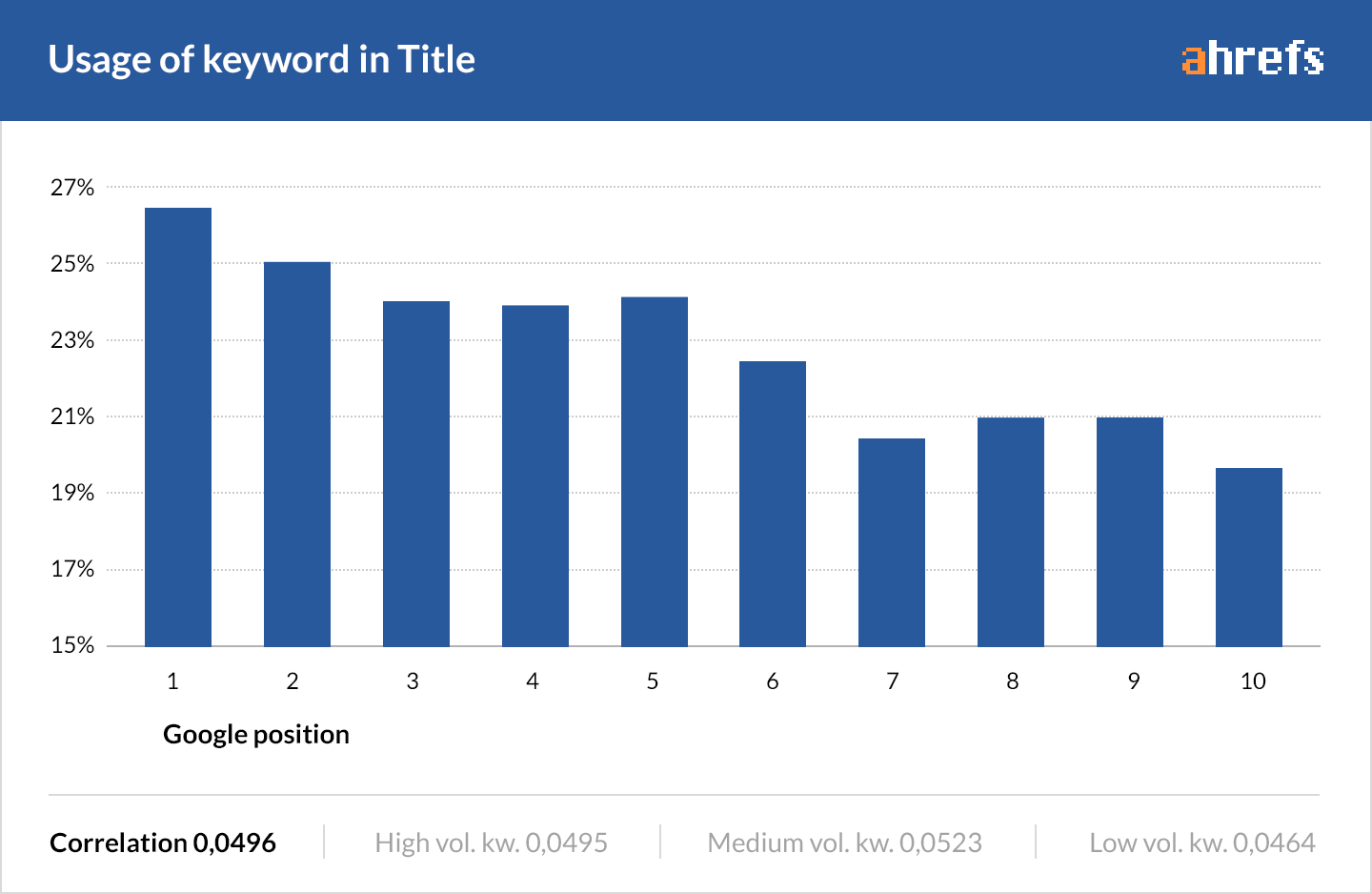
What's the difference between title tags and H1-tags?
![]()


A quick guide to title tag rules (and etiquette)



Step 1. Find a PRIMARY keyword to target
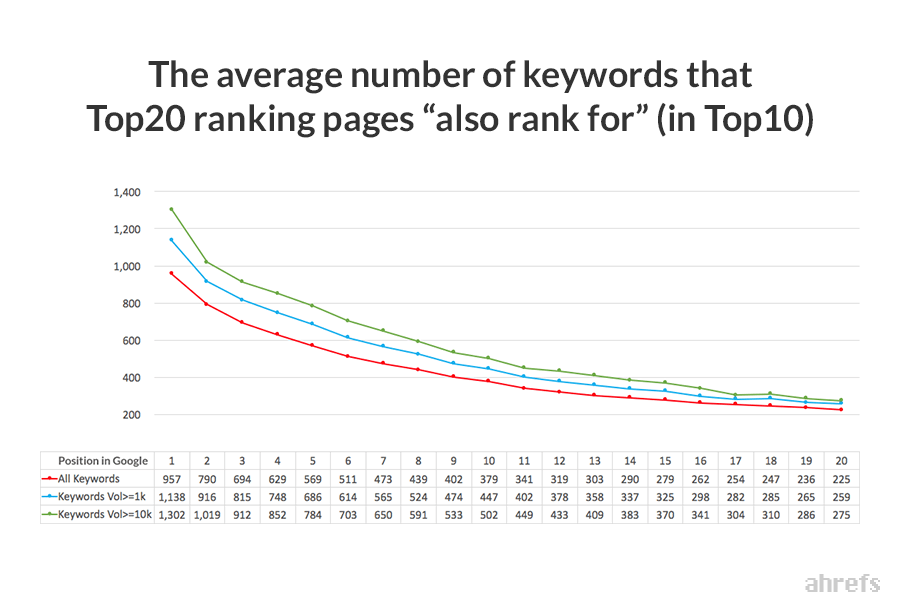
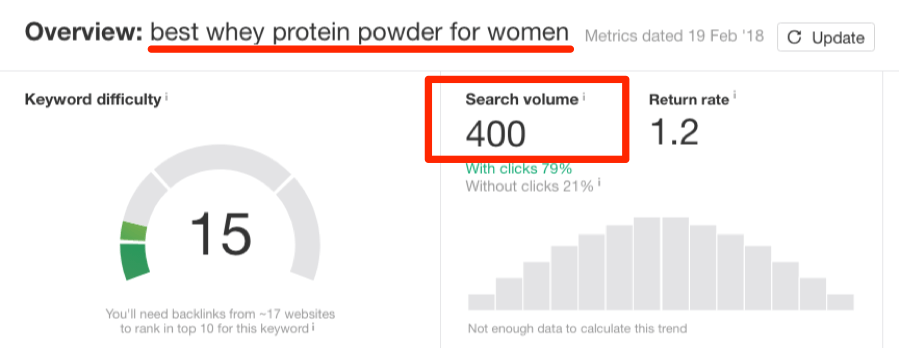

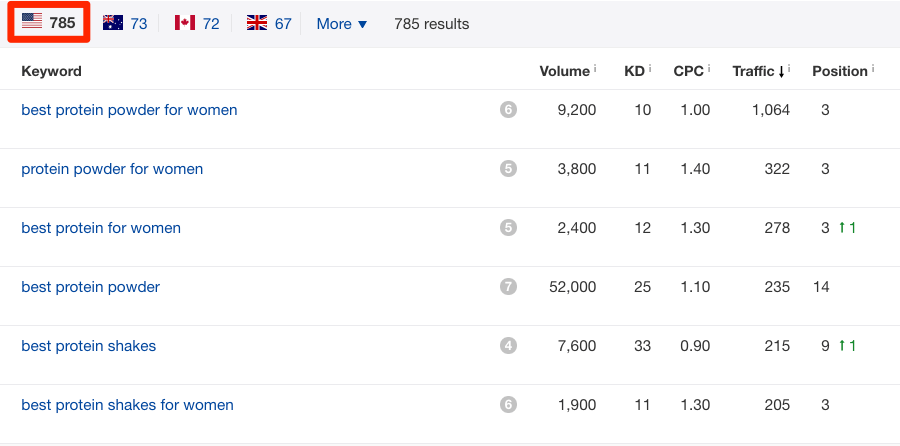

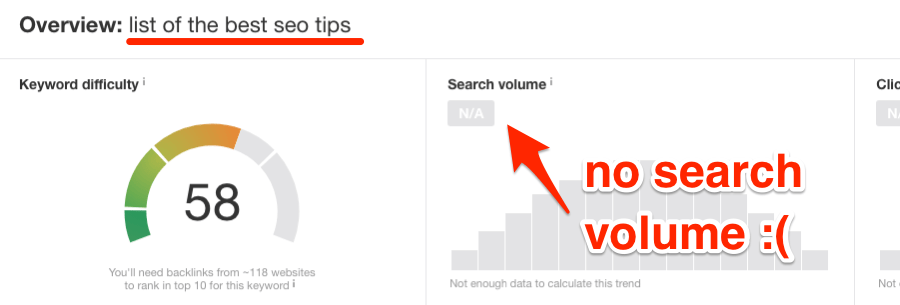
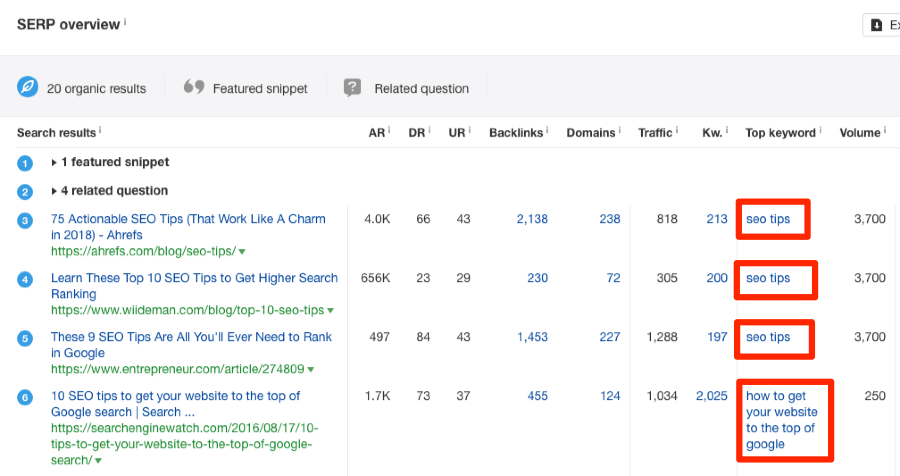

Step 2. Find LONG-TAIL variations of your primary keyword

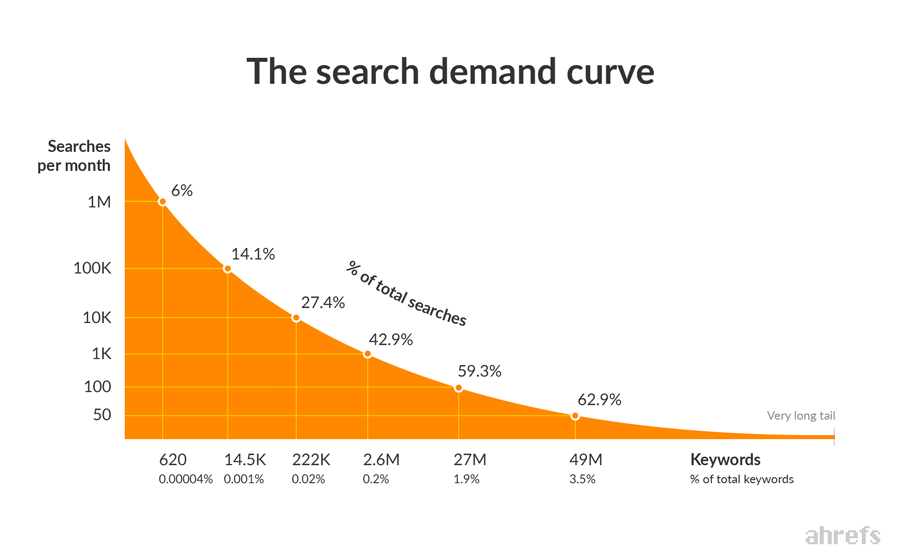
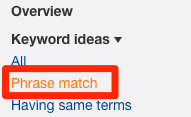

Step 3. Draft your BASIC title tag






Step 4. Look at what's unique about your content (and tell people about it)



Here's what to do once you rank in the top 10…
1. HOOK the reader in by adding EMOTION to your title


2. Add brackets/parentheses


3. Use the "curiosity gap" to entice the click


![]()

4. Front-load your keyword


Title tag auto-generation: how to craft PERFECT titles tags for product and category pages (in bulk)

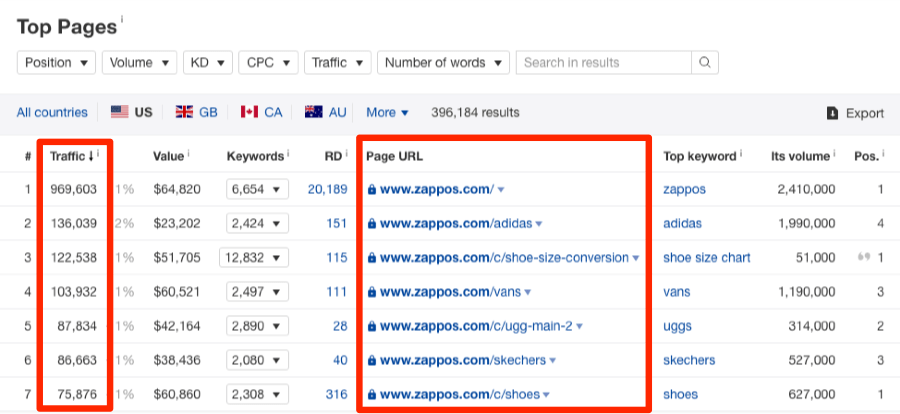
Why is Google rewriting my title tags?
1. Google thinks that your title tag sucks

2. Google thinks there's a more suitable title tag for a particular query


![]()
3. Google is looking at the anchor text of your inbound links to determine topic

How can I stop Google rewriting my title tags?


Final Thoughts
Do You Have To Use Exact Keyword Prhase In Blog Title
Source: https://ahrefs.com/blog/title-tag-seo/
Posted by: warnersittort.blogspot.com

0 Response to "Do You Have To Use Exact Keyword Prhase In Blog Title"
Post a Comment